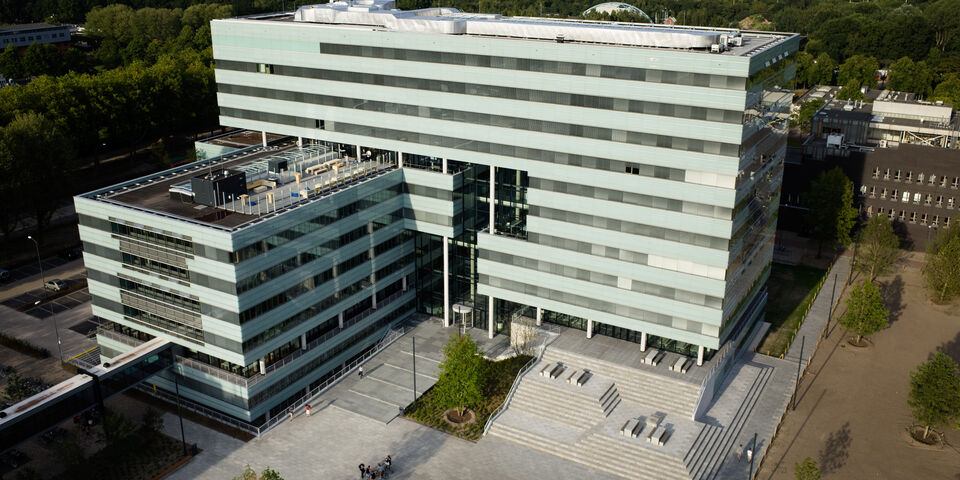TU/e halves gas consumption with the official opening of the Flux building
Monday 31 August sees the official opening by Secretary of State Sander Dekker (Education) of the Flux building, the new accommodation for the TU/e departments of Electrical Engineering and Applied Physics. The building is especially energy-efficient with fully sustainable geothermal heating, so no gas consumption. Since 2002 gas consumption at TU/e has halved, with 4 million m3.
This all makes Flux one of the most energy-efficient buildings in the Netherlands, with an energy label of A++. There is only a handful of such buildings in the Netherlands. In addition, Flux has a particularly good energy performance coefficient (EPC) of 0.6 – the statutory maximum is 1.3.
This is the third TU/e building to not have a gas connection, and so no gas consumption or CO2 emission. The heating for these buildings comes from the campus-wide geothermal heating system, one of the largest in Europe. This system stores heat and cold separately in the subsurface and retrieves them whenever heating or cooling is needed. That saves energy. The building is heated and cooled through concrete core conditioning whereby the mass of concrete is first gradually heated or cooled, subsequently creating the required ambient temperature. Not only is this energy efficient but it also makes for a pleasant stable indoor climate. The Flux facades also have a high level of insulation. The roof of the low building is green while 300 square meters of solar panels will soon be installed on the roof of the high building.
With the Flux building now operational, TU/e has taken a big step towards reducing use of fossil fuels. Gas consumption is now half of what it was in 2002, and will halve again after the recently begun renovation of the Main Building and the subsequent renovation of the Gemini building. In terms of gas and electricity the university is now climate-neutral. TU/e uses exclusively green power and compensates the CO2 emissions from gas consumption through afforestation.
The internal spatial structure of Flux is very diverse, with plenty of vistas over and across the different floors. This, and the multiple use of glass walls, makes the building transparent, open and light. Flux has eleven floors and a basement, equivalent in all to 26,000 square meters of floor area. The building contains a large lecture theater, nine teaching rooms, twelve workshops, 24 group project rooms, some 50 lab rooms and a small supermarket. The building, which has a good price-quality ratio, was designed by architecture studio Herman Hertzberger and constructed by BAM Utiliteitsbouw.
Flux is home to the departments of Electrical Engineering and Applied Physics, which had previously been housed in the outdated Potentiaal and N-laag buildings. The latter was demolished and Flux now stands in its place. Potentiaal is currently being renovated and converted into a residential block.
The university has also embarked on renovating the largest of its buildings, the Main Building, which dates from 1963. For this building TU/e is keen to achieve the highest possible BREAAM score (‘outstanding’). BREAAM is an international method of measuring the sustainability of buildings. A score of ‘outstanding’ would make the Main Building the first renovated education building in the Netherlands to achieve such a score.
Source: Press team TU/e


Discussion